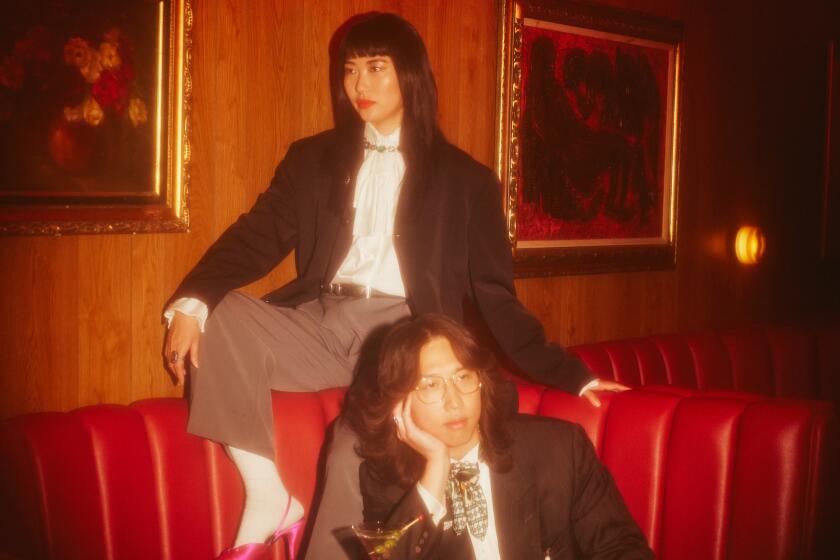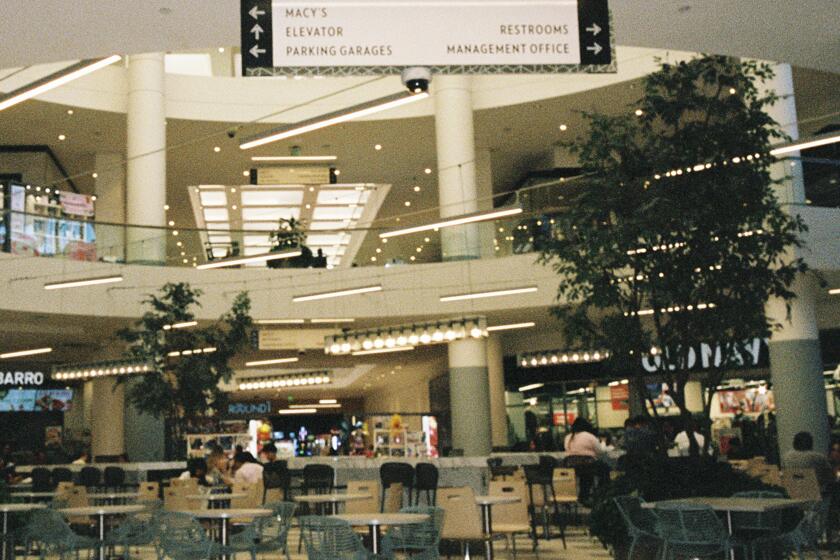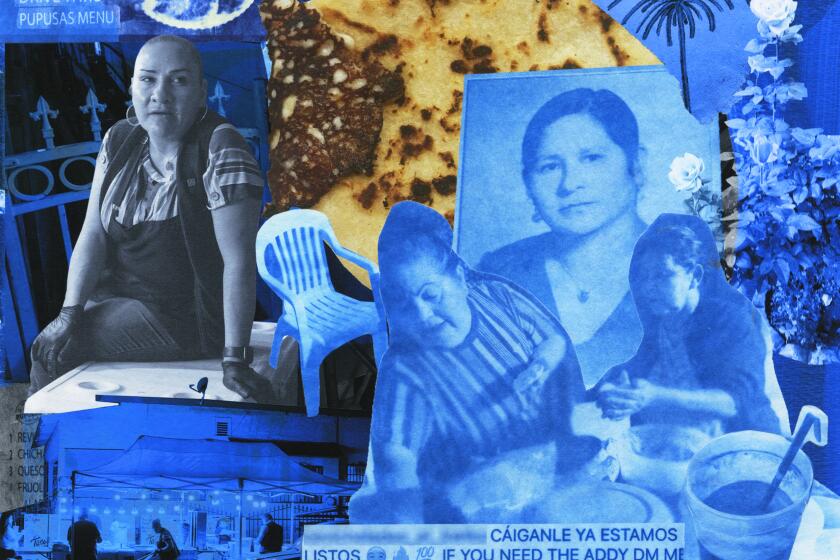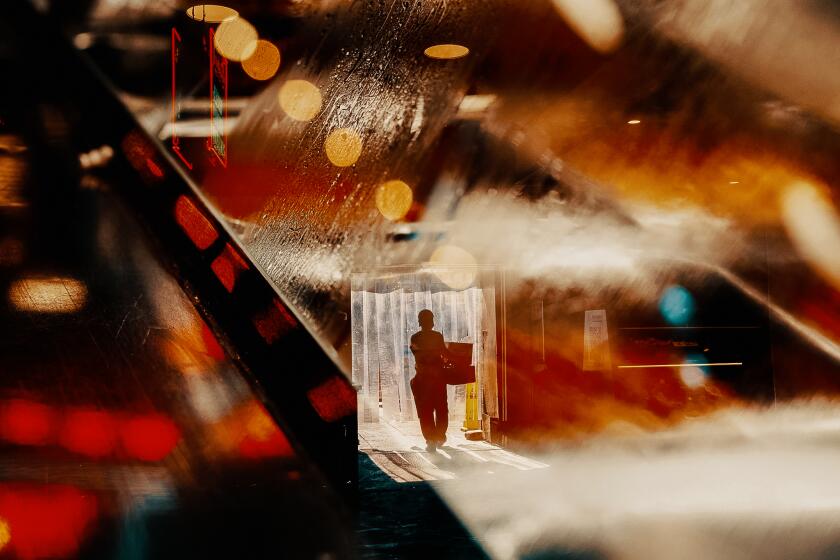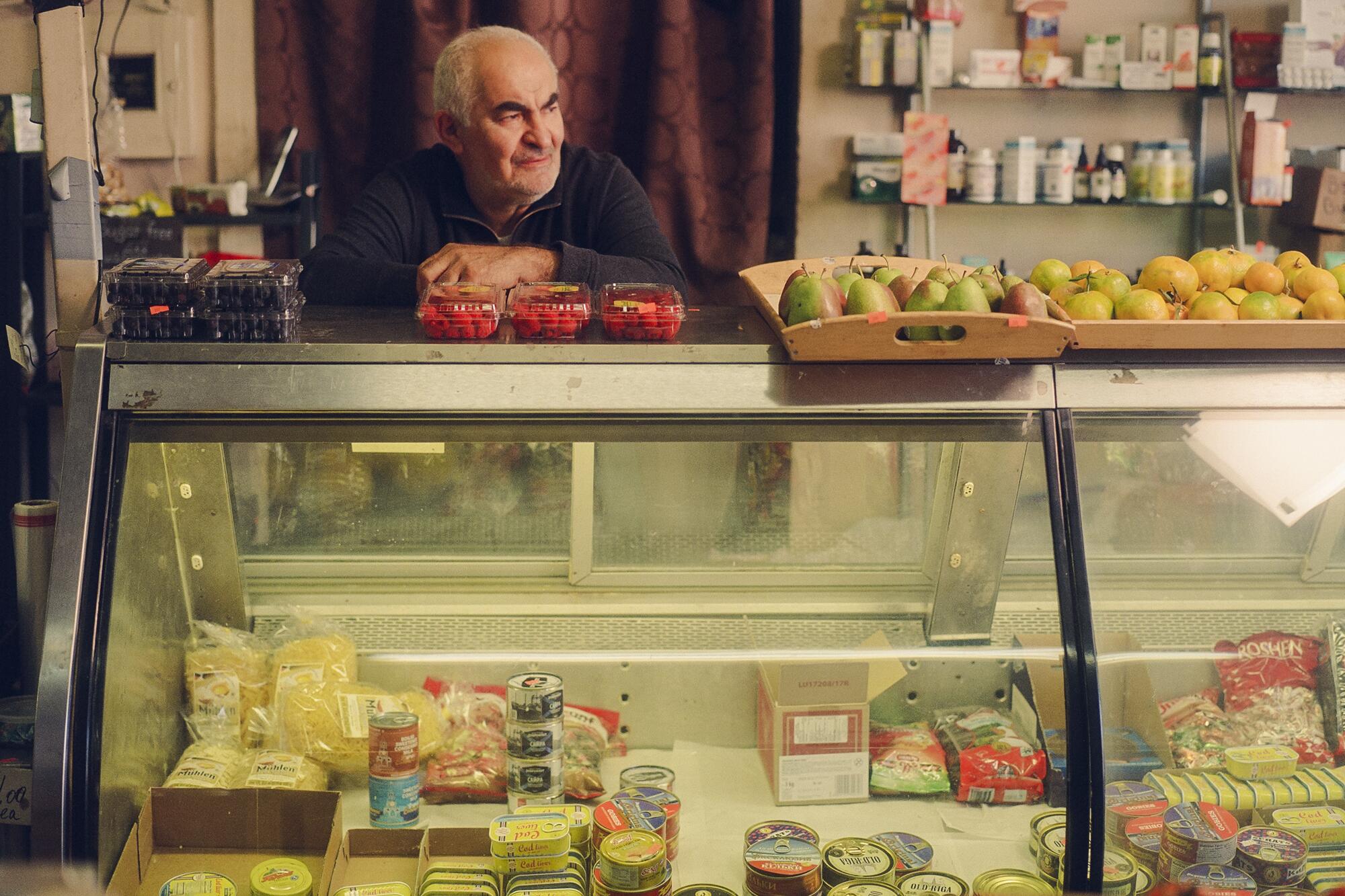
- Share via
This story is part of Image Issue 15, “Diaspora,” a fantastic voyage through the mecca of food, from Hollywood haunts to mall food courts to L.A. staples. Read the whole issue here.
I’ve never set foot in Sweet Chick at 448 N. Fairfax Ave., though I live two blocks away and pass it several times a week. To the best of my recollection, I only once ducked into Rosewood Tavern, its predecessor, which ceded the floor space to the Brooklyn-based fried poultry chain in 2016. But Black Sea, which held the spot since the 1980s, before business dried up in 2011 — that place I knew. It’s been much on my mind lately, as I look back on my youth among Soviet and post-Soviet émigrés in West Hollywood and the Fairfax District. Once numbering in the tens of thousands, that community has long been shrinking, receding from view, along with its institutions and other tangible signs of its existence.
Black Sea was, according to the phone book, a Russian restaurant, but both those terms require qualification. The clientele was largely Russian-speaking but heavily Jewish, made up of immigrants from Ukraine and other Soviet republics. The very name, Black Sea, carried Ukrainian connotations, and, to my newly arrived Odesan family, it immediately spoke of home. Was it a restaurant? Not in the standard American sense. One didn’t just walk in, take a seat and wait to be served. It was more of a banquet hall, but “hall” is a stretch for that modestly sized carpeted room. True, one wall was mirrored, but it fooled no eyes, and the small dark stage and square of parquet dance floor made the space feel even pokier. The way it worked is that a family with something to celebrate — an elder’s birthday or a high-numbered wedding anniversary — would call the owners well in advance and reserve a table long enough to fit the whole mishpacha, or the part of it that wasn’t quarreling. The lead organizer would settle the bill at the end of the night, so the guests were expected to bring not only a gift but an envelope with enough cash to cover their meal. They’d also bring their own bottles, to cut down on the overall cost.
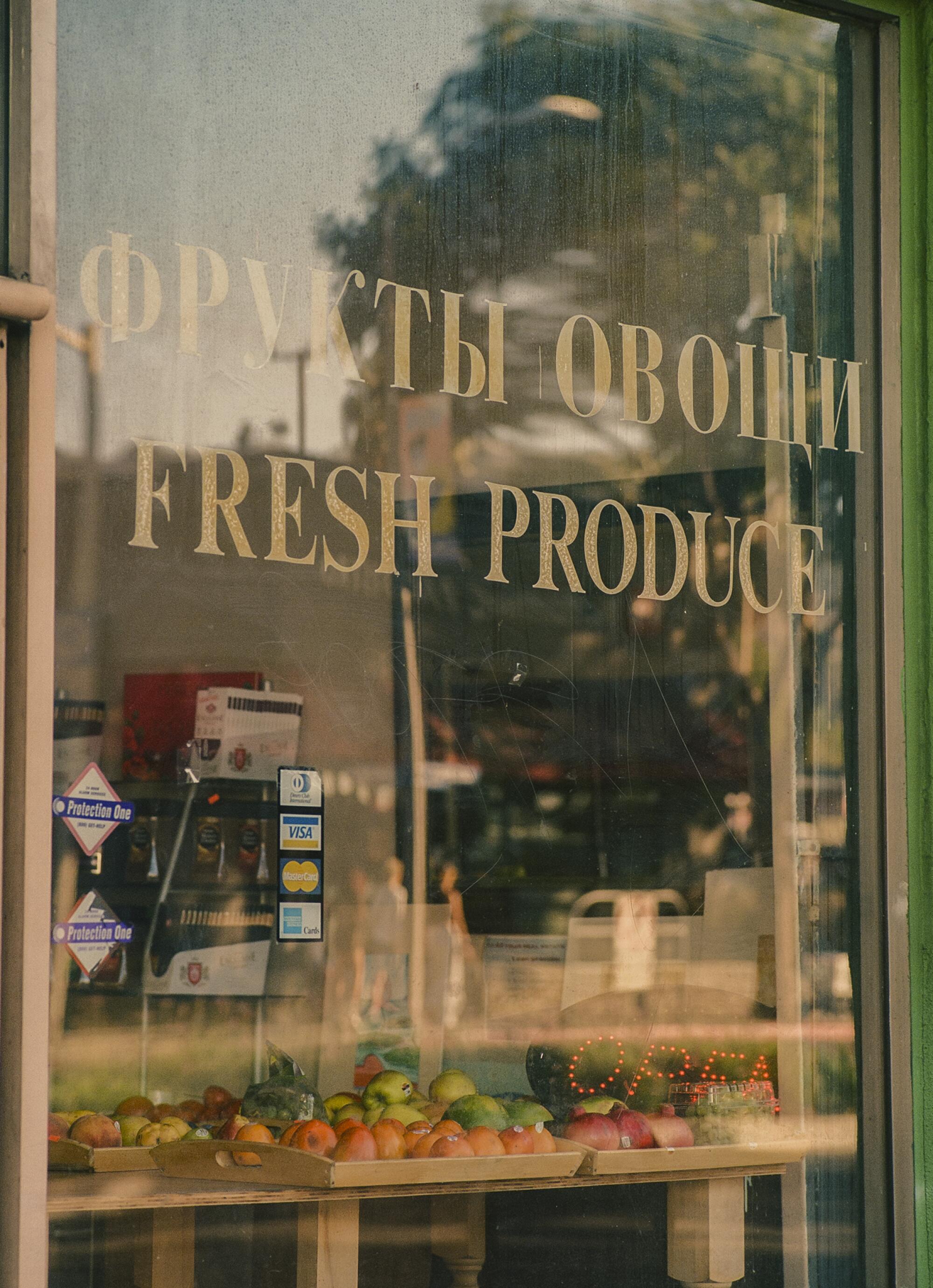
Doesn’t sound very glamorous now, but believe me, when I first walked through those doors as an 8-year-old in 1991, just months after my family immigrated, I felt like a prince. Picture those plates of smoked salmon and sturgeon, of “dressed” herring (under furs, as the Russian has it), of shredded carrots and beets, and of that ultimate mainstay of Soviet cuisine, the potato salad “Olivier,” named after its 19th century inventor, the Belgian chef at a Moscow restaurant — all of them covered with plastic wrap. Still doesn’t sound very glamorous, I admit, but that’s only because you and I are long desensitized to the magic of plastic wrap. The sight of homogenized plenty, plump and glinting and safely preserved, was still new to me then. Someplace I have a snapshot of myself — taken at the Ralphs of “Play It as It Lays” fame, at Sunset and Fuller, or at the Alpha Beta at Santa Monica and Fairfax, which is now a Whole Foods — standing in the meat aisle, with a ziggurat of fresh beef for a background. That was my family’s second day in the U.S. We couldn’t believe it.
There’s a hypothesis that the Black Sea in which I swam as a child was once a freshwater lake dammed off from the Mediterranean, its neighbor to the west. Toward the end of the last Ice Age, as sea levels began to rise, the Mediterranean’s salty water gradually flooded the lake. This almost homeopathic process of blending, which took place some 10,000 years ago, is not unlike what we immigrants underwent at the Black Sea on Fairfax in the last decades of the 20th century. Comforting Soviet staples were offered to us in American portions, thin layers of plastic lending them a special sheen.
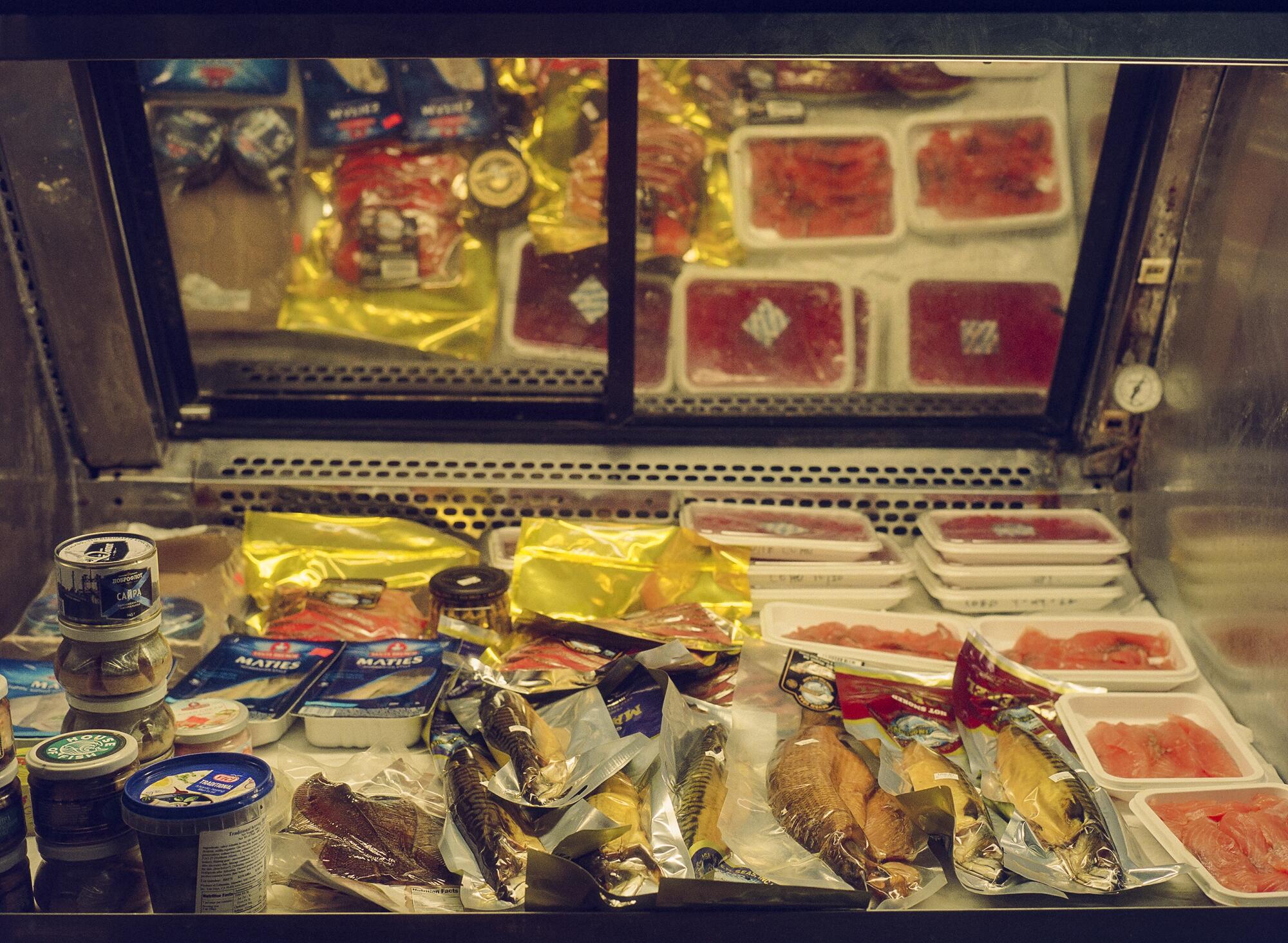
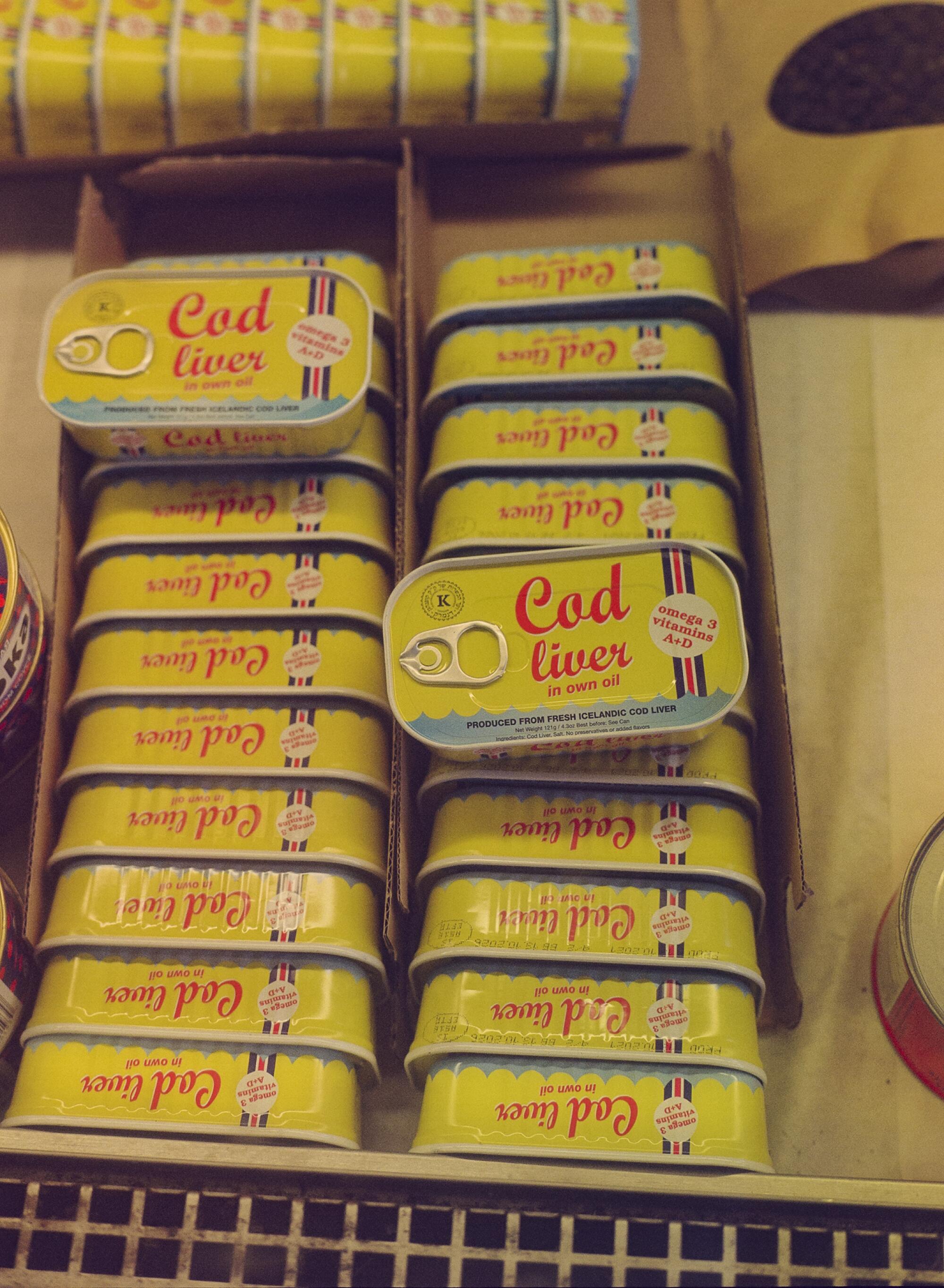
And the music. A word about the music. The bands invariably consisted of a woman in a skintight sequined dress with padded shoulders, her hair teased into a Gorgon-like mane, and two tall, beer-bellied, balding yet ponytailed men in polyester button-down shirts with abstract patterns. One of the men stood behind a Casio or Yamaha keyboard; the other plucked away at an electric bass. Was it the same trio every time? Impossible. No single group has ever maintained such a run, not even in Vegas. What they played were “restaurant songs,” as Soviet citizens called them: Russophone hits by the likes of Alla Pugacheva (who, to the great relief of many Soviet-era émigrés, recently spoke up against Russia’s genocidal war on Ukraine) and select Western pop songs by ABBA, the Beatles, Adriano Celentano and others. The musical high point of the evening, however, was always a fervent rendition of “Hava Nagila,” the Jewish folk song of celebration.
This was what everyone had come to hear — not just to the Black Sea, I mean, but to the coast of the Pacific. Between 300,000 and 600,000 immigrants from the U.S.S.R. arrived in Southern California in the 1980s and ’90s, many of us Jews. Because we couldn’t practice our faith or maintain our traditions in our home country, we were seldom very religious, but our identity, which had been a liability, was important to us, burnished as it was with the pride of having survived persecution. I should note that, on a usual night, there were two families marking one or another occasion at Black Sea. The long tables’ occupants would shoot suspicious, sideways glances at one another throughout the evening. The band would toss out dedications first to one family, then to the other, and so on, back and forth. Two of the Montagues would dance to Pugacheva, four of the Capulets to the Beatles. Just as the tension threatened to become unbearable, “Hava Nagila” would bring both tables to the floor. It reminded us why we were all there.
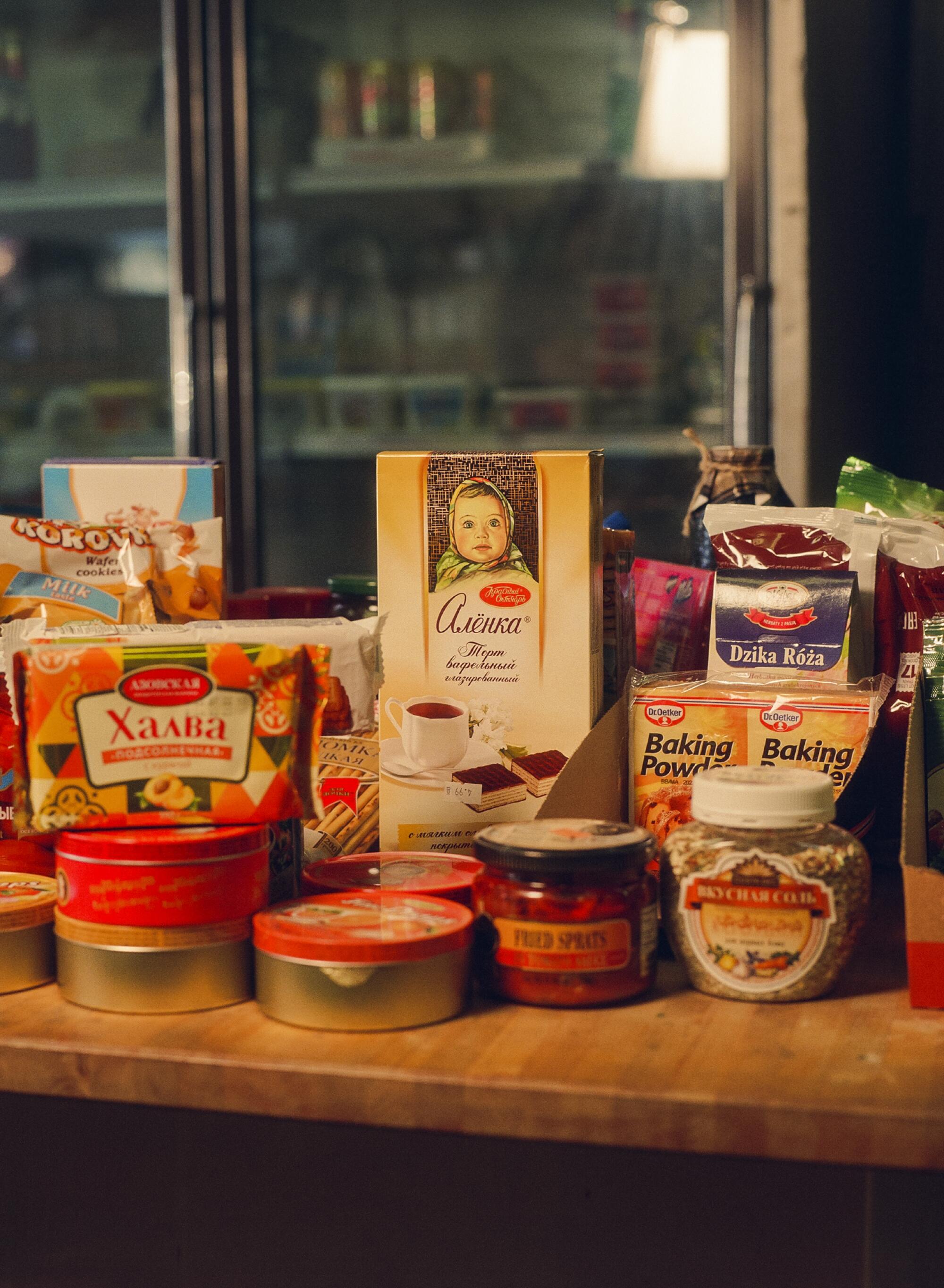
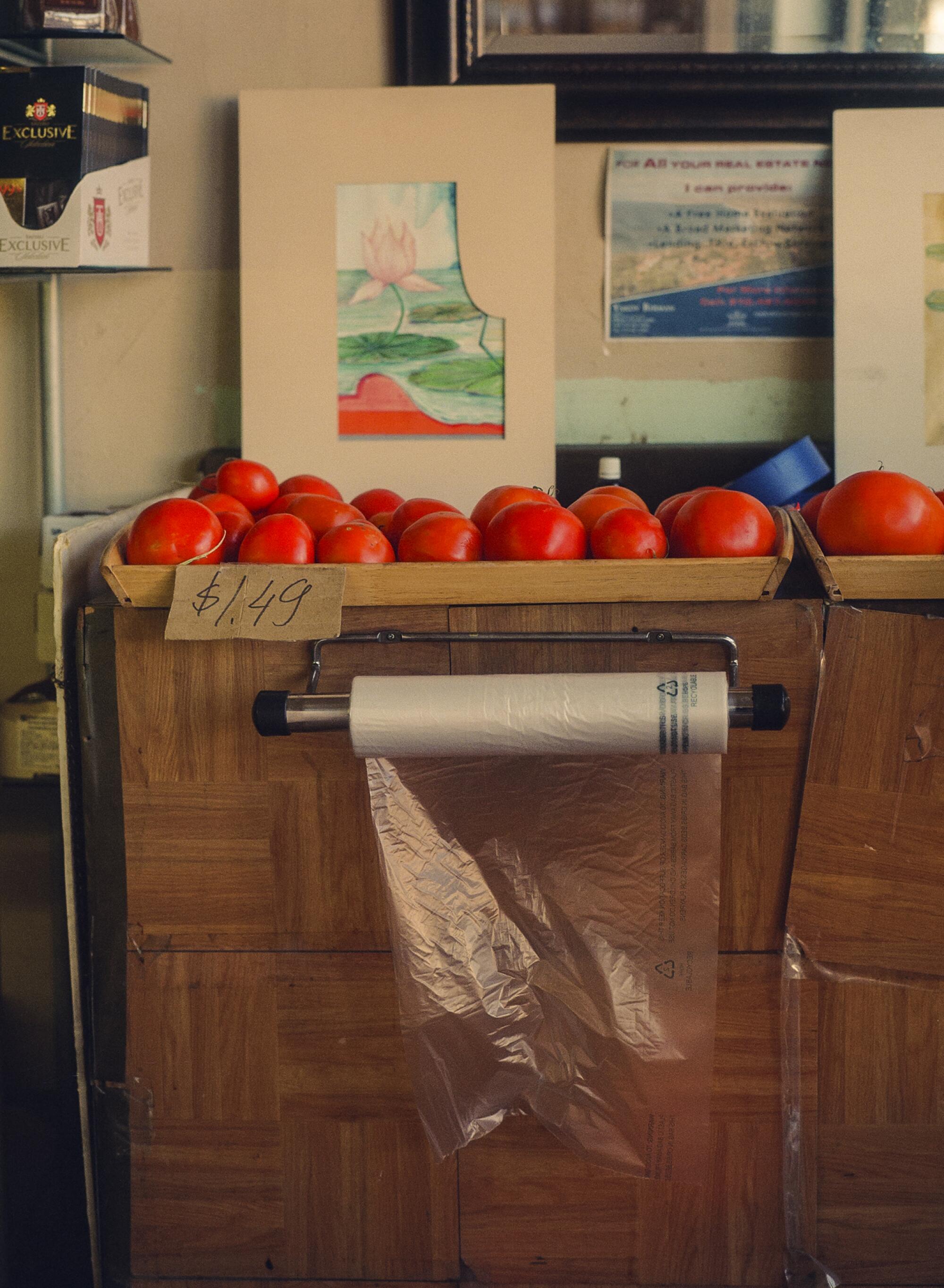
There aren’t many banquet halls of this sort left in West Hollywood, which was for decades the seat of the Soviet and post-Soviet émigré community. Tellingly, the last banquet-style gathering I attended — this one in Kashtan, at 7707 Santa Monica Blvd. — was a funeral reception, and so was the last one my family organized — in Traktir, at 8151 Santa Monica Blvd. The latter establishment is better adapted to its host culture. It’s a proper restaurant, where parties large and small can take tables indoors or on the small patio. Walk-ins welcome. Traktir even made it into an episode of “Bosch: Legacy” — sure, as a meeting place for Russian hitmen, but at least no one croaked with their face in a bowl of borscht.
Another banquet hall still clings to its second-story perch at 531 N. Fairfax Ave., looking down its nose at the ever-changing storefronts below. Maxim’s is old-school stately, with napkin rings and drapes galore. It’s there that we celebrated my best friend’s wedding. When the cake his father had ordered was unveiled, it turned out that the émigré baker had misspelled the American-born bride’s name, Brooklyn. Forgive me for bragging, but I saved the day, snapping off a piece of icing and changing the “i” to a “y.” Baby steps toward acculturation, a gradual sea change.
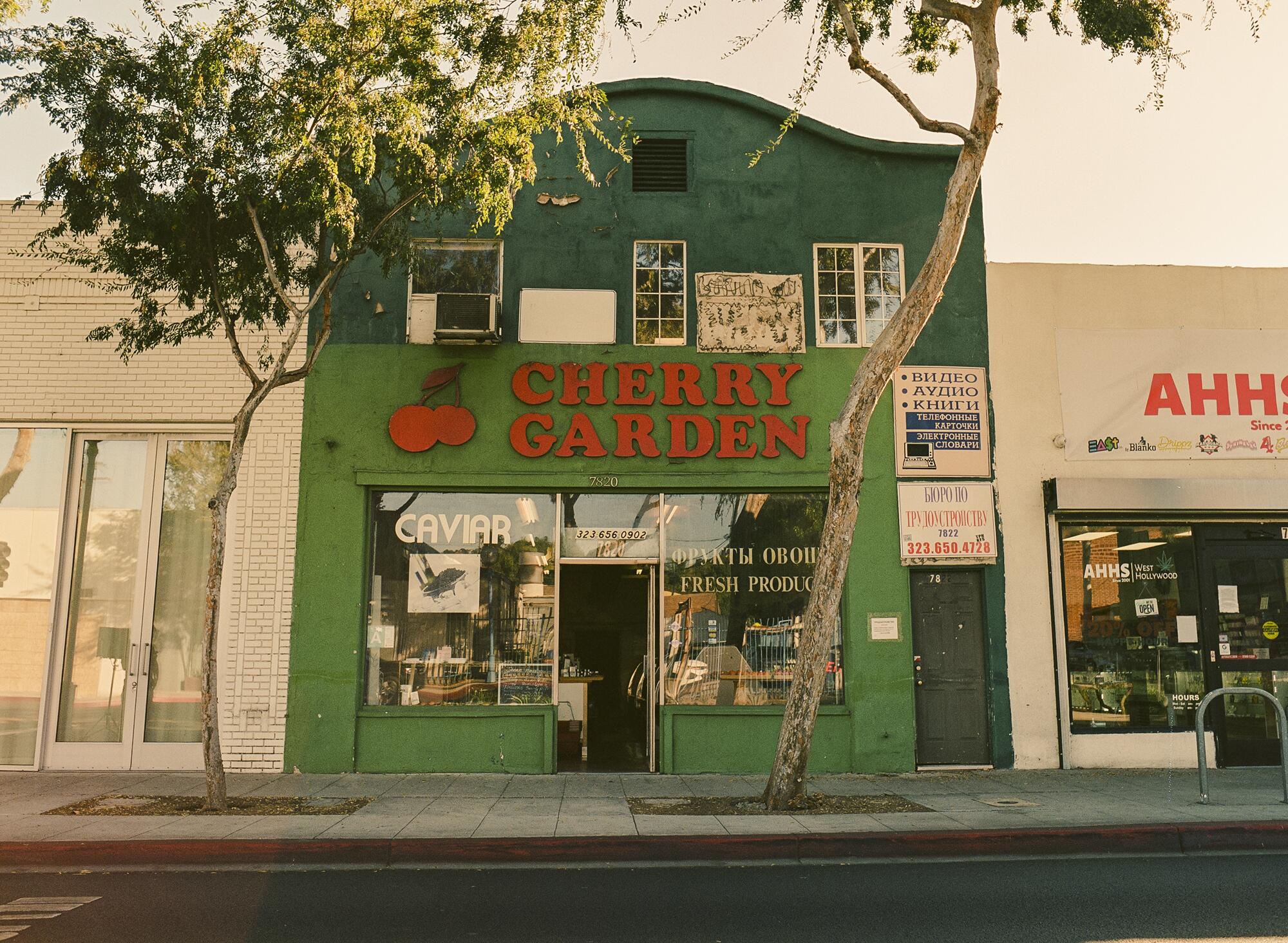
These days, when I feel the need to dip back into old familiar waters, I stop by Cherry Garden Market or Odessa Grocery, both on Santa Monica Boulevard. The staff is a bit gruff — in the Soviet Union, one’s job security didn’t depend on customer satisfaction — but that’s part of the charm. The fruit and vegetables are fresh, the grains and spices ample, and the cold cuts are out of this world. If you decide to pay a visit, come armed with patience: The people ahead of you in line will demand to try every meat and cheese in the deli case before settling on a purchase. Here you’ll find things you won’t find anywhere else. One of my American-born friends makes a weekly pilgrimage to Odessa from Los Feliz for bottles of birch juice.
Raise a glass to Old Hollywood restaurants. The martinis, tuxedoed waiter and cigarette stains on a mural are a window to history.
Some years ago I began to take stock of the vanishing landscape of banquet halls, delis, community libraries and grocery stores of “Russian Hollywood,” and this gave rise to a series of poems. One of them begins, “And now I watch another era fade, / Cyrillic letters scraped from shuttered storefronts, / tar-crusted bread, stale fish, stiff marmalade / sit sulking on the shelves, unchosen orphans.” It’s in the way of émigré communities to vanish, at times over and over again. The poem ends with an image of the silent film star Alla Nazimova, born in Crimea as Marem-Ides Leventon, beside the pool she built at her estate at Sunset and Crescent Heights, the Garden of Allah, which later became a hotel and is now the parking lot of a Chase bank. That pool reportedly was shaped like the Black Sea, in which Nazimova swam as a child, just as I had a century later. The pool is long gone but not entirely forgotten. The Garden of Allah lives on in memoirs. I hope the Black Sea banquet hall and other haunts of latter-day émigrés won’t be entirely forgotten either, even as the community that relied on them blends into the larger sea around it.
Boris Dralyuk is the author of “My Hollywood and Other Poems” (Paul Dry Books, 2022) and translator of volumes by Isaac Babel, Andrey Kurkov, Maxim Osipov and other authors. He is the editor in chief of the Los Angeles Review of Books, and his work has appeared in the New York Review of Books, the Times Literary Supplement, the New Yorker, Granta and elsewhere.
More stories from Image
